Atmospheric Emissions from Oil and Gas Extraction and Production in Greece
Abstract
:1. Introduction
1.1. Oil and Gas Extraction and Production in Greece
1.2. Atmospheric Emissions from Oil and Gas Extraction
- exhausts from boilers, turbines, furnaces, heaters, and incinerators operating on natural gas
- exhausts from diesel engines
- gas flaring
2. Methodology
2.1. Air Quality Measurements
2.2. Meteorological Measurements
2.3. Atmospheric Emissions
- The floating roof tanks used for the storage of stabilized crude oil, with the total VOC emissions amounting to 3.61 Mt/year with a production of crude oil about 6000 bbl/day.
- Emissions during loading crude oil into a tanker are estimated at 86.36 t per year, with a daily production of crude oil at 12,000 bbl (maximum expected production) [23].
3. Results and Discussion
3.1. CO2 Emissions
3.2. Sulfur Emissions (H2S and SO2)
3.3. Emissions of Nitrogen Oxides (NOx) and Nitrous Oxide (N2O)
3.4. Volatile Organic Compounds (VOCs)
3.5. Summary of Contributions to Atmospheric Emissions for 2014
4. Conclusions
Acknowledgments
Author Contributions
Conflicts of Interest
References
- Kavala Oil S.A. History. 2016. Available online: http://www.kavalaoil.gr/index.php?act=viewCat&catId=1 (accessed on 30 March 2016).
- E&P Forum/UNEP. Environmental Management in Oil and Gas Exploration and Production; E&P Forum/UNEP: Paris, France, 1997; pp. 12–13. ISBN 92-807-1639-5. [Google Scholar]
- Kavala Oil S.A. Offshore Facilities. 2016. Available online: http://www.kavalaoil.gr/index.php?act=viewCat&catId=20 (accessed on 30 March 2016).
- Hellenic Ministry of Environment & Energy. E-PRTR Inventory Report for the Offshore Facilities of Kavala Oil S.A. for the Year 2014; Hellenic Ministry of Environment & Energy: Athens, Greece, 2014. [Google Scholar]
- Energean Oil and Gas. Reserves and Resources. 2016. Available online: http://www.energean (accessed on 30 March 2016).
- Hellenic Hydrocarbons Recourse Management. Offshore Ionian & Crete Tenders 2017. 2017. Available online: http://www.greekhydrocarbons.gr/ (accessed on 30 January 2017).
- Ioannidis, K. Industrial Training Schedule, Notes for the Module on “Onshore & Offshore Processing”; MSc Program on Oil and Gas Technology; Eastern Macedonia and Thrace Institute of Technology: Kavala, Greece, 2014–2015. [Google Scholar]
- Olaguer, E.P. Atmospheric Impacts of the Oil and Gas Industry; Elsevier: New York, NY, USA, 2017; ISBN 978-0-12-801883-5. [Google Scholar]
- Warneke, C.; Geiger, F.; Edwards, P.; Dube, W.; Petron, G.; Zahn, A.; Brown, S.S.; Graus, M.; Gilman, J.B.; Lerner, B.M.; et al. Volatile organic compound emissions from the oil and natural gas industry in the Uintah Basin, Utah: Oil and gas well pad emissions compared to ambient air composition. Atmos. Chem. Phys. 2014, 14, 10977–10988. [Google Scholar] [CrossRef]
- Hellenic Ministry of Environment & Energy. Revision and Amendment of Ministerial Decision No. 96213/17.9.2003 on the Approval of the Environmental Terms of the Onshore Installations of “Kavala Oil S.A.” Operating at Nea Karvali of Kavala Perfecture. Ministerial Decision No. 213450/5.12.2013. 2013. Available online: https://diavgeia.gov.gr/decision/view/%CE%92%CE%9B%CE%93%CE%A80-%CE%92%CE%A67 (accessed on 30 January 2015).
- Tsetoglou, V.; (Group HSE Manager of Kavala Oil S.A., Kavala, Greece). Personal communication, 2016.
- European Commission. Air Quality. Available online: http://ec.europa.eu/environment/air/quality/standards.htm (accessed on 22 September 2017).
- European Commission. Directive 2008/50/EC, on Ambient Air Quality and Cleaner Air for Europe. 2008. Available online: http://eur-lex.europa.eu/legal-content/EN/TXT/PDF/?uri=CELEX:32008L0050&from=en (accessed on 30 June 2016).
- European Commission. Directive 1999/30/EC, Relating to Limit Values for Sulphur Dioxide, Nitrogen Dioxide and Oxides of Nitrogen, Particulate Matter and Lead in Ambient Air. 1999. Available online: http://eur-lex.europa.eu/LexUriServ/LexUriServ.do?uri=CELEX:31999L0030:EN:HTML (accessed on 30 June 2016).
- European Commission. Directive 96/62/EC, on Ambient Air Quality Assessment and Management. 1996. Available online: http://eur-lex.europa.eu/legal-content/EN/TXT/PDF/?uri=CELEX:31996L0062&from=EN (accessed on 30 June 2016).
- TÜV Rheinland Immissionsschutz und Energiesysteme GmbH. Summary of the Report on the Suitability Test of the Ambient Air Quality Measuring System AF22M of the Company Environnement S.A. for the Measured Component SO2 (Accessed on February 2018 by Email from Operator). Unpublished work. 2008. [Google Scholar]
- Hellenic Ministry of Environment & Energy. Environmental Impact Assessment of the Offshore Facilities of Kavala Oil S.A.; Hellenic Ministry of Environment & Energy: Athens, Greece, 2013; 43p. [Google Scholar]
- Thomas, F.W.; Davidson, C.M. Monitoring Sulfur Dioxide with Lead Peroxide Cylinders. J. Air Pollut. Control Assoc. 1961, 11, 24–27. [Google Scholar] [CrossRef] [PubMed]
- European Commission. The Monitoring and Reporting Regulation—General Guidance for Installations, Measurement Based Approaches. 2012, pp. 26–27. Available online: http://ec.europa.eu/clima/policies/ets/monitoring/index_en.htm (accessed on 30 May 2016).
- European Commission. JRC Reference Report on Monitoring of Emissions from IED-Installation. 2013. Available online: http://eippcb.jrc.ec.europa.eu/reference/BREF/ROM_FD_102013_online.pdf (accessed on 30 May 2016).
- European Commission. Directive 2001/81/EU, on National Emission Ceilings for Certain Atmospheric Pollutants. 2001. Available online: http://eur-lex.europa.eu/legal-content/EN/TXT/PDF/?uri=CELEX:32001L0081&from=EL (accessed on 30 March 2015).
- European Commission. Directive 2003/87/EU, Establishing a Scheme for Greenhouse Gas Emission Allowance Trading within the Community and Amending Council Directive 96/61/EC. 2003. Available online: http://eur-lex.europa.eu/legal-content/EN/TXT/PDF/?uri=CELEX:32003L0087&from=EN (accessed on 30 March 2015).
- Hellenic Ministry of Environment & Energy. Revised Environmental Impact Assessment (2013). 2013. Available online: https://diavgeia.gov.gr/decision/view/%CE%92%CE%9B%CE%93%CE%A80-%CE%92%CE%A67 (accessed on 30 January 2015).
- United States Environmental Protection Agency (US EPA). Volatile Organic Compounds Emissions. 2014. Available online: https://cfpub.epa.gov/roe/ (accessed on 30 December 2017).
- Energean Oil and Gas. Abstract of Environmental Impact Assessment in Onshore Facilities. 2013. Available online: https://www.energean.com/media/1098/2013-μπε-χερσαίων-εγκαταστασεων-περίληψη.pdf (accessed on 12 February 2018).
- European Commission. Directive 2010/75/EC, on Industrial Emissions (Integrated Pollution Prevention and Control). 2010. Available online: http://eur-lex.europa.eu/LexUriServ/LexUriServ.do?uri=OJ:L:2010:334:0017:0119:en:PDF (accessed on 30 June 2016).
- European Commission. Implementing Decision, Establishing Best Available Techniques (BAT) Conclusions, under Directive 2010/75/EU of the European Parliament and of the Council on Industrial Emissions, for the Refining of Mineral Oil and Gas. 2014. Available online: http://eur-lex.europa.eu/legal-content/EN/TXT/PDF/?uri=CELEX:32014D0738&from=EN (accessed on 10 February 2018).
- Concawe-Enviromental Science for the European Refining Industry. Air Pollutant Emission Estimation Methods for E-PRTR Reporting by Refineries. 2017. Available online: https://www.concawe.eu/wp-content/uploads/2017/04/Rpt_17-4.pdf (accessed on 30 December 2017).
- Kahforoushan, D.; Fatehifar, E.; Ahmadi, J. A Novel Method for Determination of Acid Gas Flares Emission Factors. In Proceedings of the CESET 2015 Conference, Tehran, Iran, 5–6 May 2015; Available online: https://www.researchgate.net/publication/277011787_A_Novel_method_for_determination_of_acid_gas_flares_Emission_factors (accessed on 30 December 2017).
- Hellenic Ministry of Environment, Energy and Climate Change. Greece—National Inventory Report 2014. 2014. Available online: http://unfccc.int/national_reports (accessed on 30 April 2016).
- IPCC Guidelines for National Greenhouse Gas Inventories. Stationary Combustion. 2006. Available online: https://www.ipcc-nggip.iges.or.jp/public/2006gl/pdf/2_Volume2/V2_2_Ch2_Stationary_Combustion.pdf (accessed on 20 April 2015).
- European Commission. Climate Action, EU Action, Climate Strategies & Targets, 2020 Climate & Energy Package. Available online: https://ec.europa.eu/clima/policies/strategies/2020_en (accessed on 30 April 2015).
- European Commission. Climate Action, European Transaction Log. 2014. Available online: http://ec.europa.eu/environment/ets/ohaDetails.do?accountID=92126&languageCode=en&action=all®istryCode=GR&returnURL=permitIdentifier%3D%26languageCode%3Den%26form%3Doha%26installationName%3D%26accountHolder%3D%26search%3DSearch%26installationIdentifier%3D%26resultList.currentPageNumber%3D1%26account.registryCodes%3DGR%26searchType%3Doha%26mainActivityType%3D20%26currentSortSettings%3D (accessed on 30 June 2015).
- U.S. Energy Information Administration. International Energy Statistics. Available online: http://www.eia.gov/cfapps/ipdbproject/iedindex3.cfm?tid=5&pid=55&aid=1&cid=GR,&syid=2000&eyid=2015&unit=TBPD (accessed on 30 June 2016).
- Brandt, A.R.; Unnasch, S. Energy Intensity and Greenhouse Gas Emissions from Thermal Enhanced Oil Recovery. Energy Fuels 2010, 24, 4581–4589. [Google Scholar] [CrossRef]
- Cheapower. Learn about Oil Industry Conversions. Available online: http://www.cheapower.com/newsandco/oil_industry_conversions.htm (accessed on 10 December 2017).
- Skjerpen, T.; Gavenas, E.; Rosendahl, K. CO2− emissions from Norwegian oil and gas extraction. Energy 2015, 90, 1958–1959. [Google Scholar]
- Norwegian Oil and Gas Association. Environmental Report. 2015. Available online: https://www.norskoljeoggass.no/Global/2015%20dokumenter/Environmental%20report%202015.pdf (accessed on 15 June 2015).
- Varotsis, N. Chemical Composition of Hydrocarbons; Reservoir Engineering; Department of Mineral Resources Engineering, The Technical University of Crete: Chania, Greece, 2010; pp. 13–14. [Google Scholar]
- US Department of Labor. Regulations (Standards-29 CFR), Occupational Safety and Health Administrator. 2017. Available online: https://www.osha.gov/pls/oshaweb/owadisp.show_document?p_table=STANDARDS&p_id=9993 (accessed on 30 June 2016).
- World Health Organization (WHO). Air Quality Guidelines Second Edition, Chapter 6.6 Hydrogen Sulfide. 2000. Available online: http://www.euro.who.int/__data/assets/pdf_file/0019/123076/AQG2ndEd_6_6Hydrogensulfide.PDF (accessed on 30 June 2016).
- United States Department of the Interior. Ringelmann Smoke Chart, Bureau of Mines (Revision of IC 7718). 1967. Available online: https://www.cdc.gov/niosh/mining/userfiles/works/pdfs/ic8333.pdf (accessed on 29 December 2017).
- Petrowiki. Emissions from Oil and Gas Production Operations, 4.3. Reducing SO2. Available online: http://petrowiki.org/Emissions_from_oil_and_gas_production_operations#Reducing_SO2 (accessed on 29 December 2017).

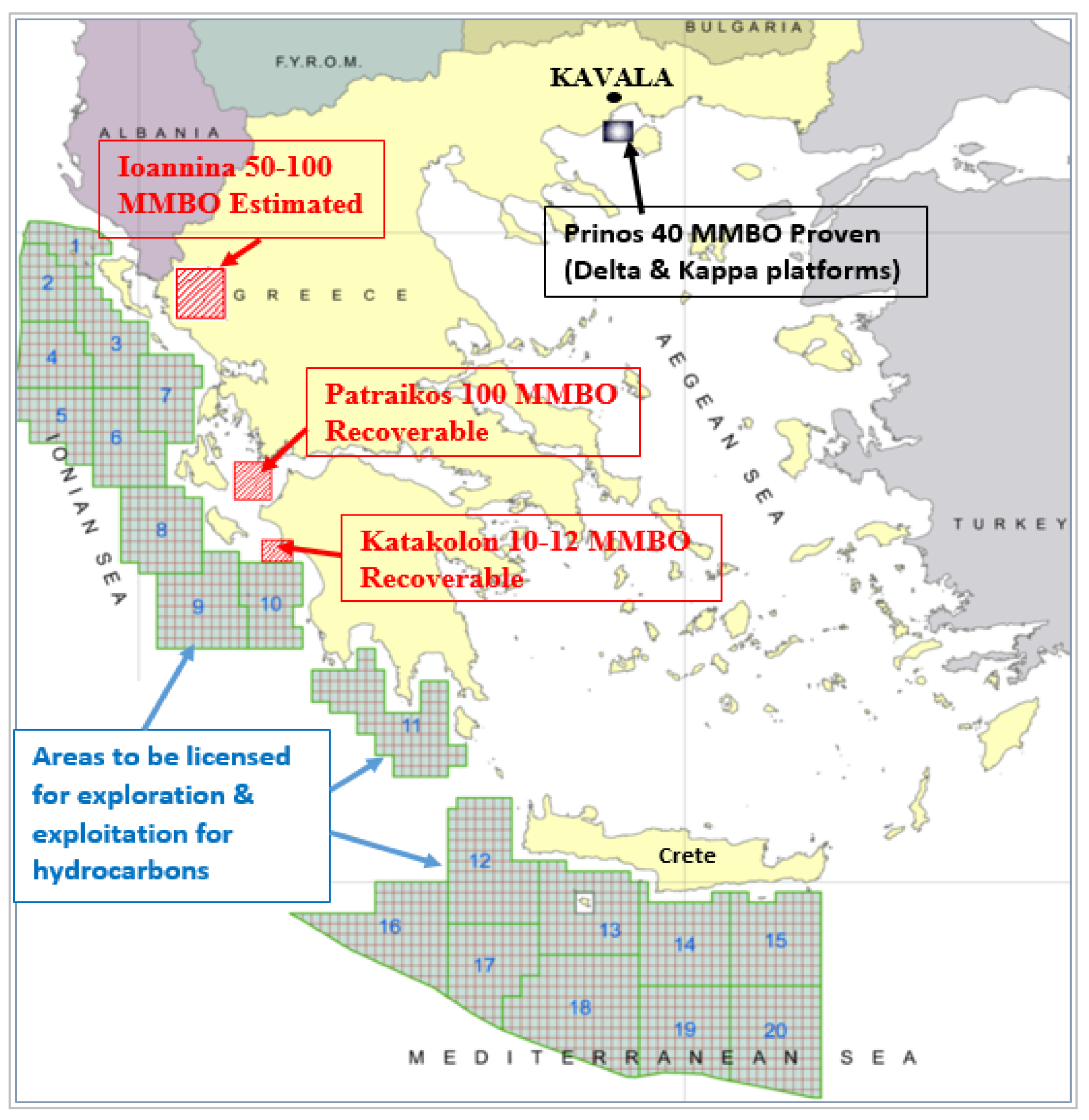
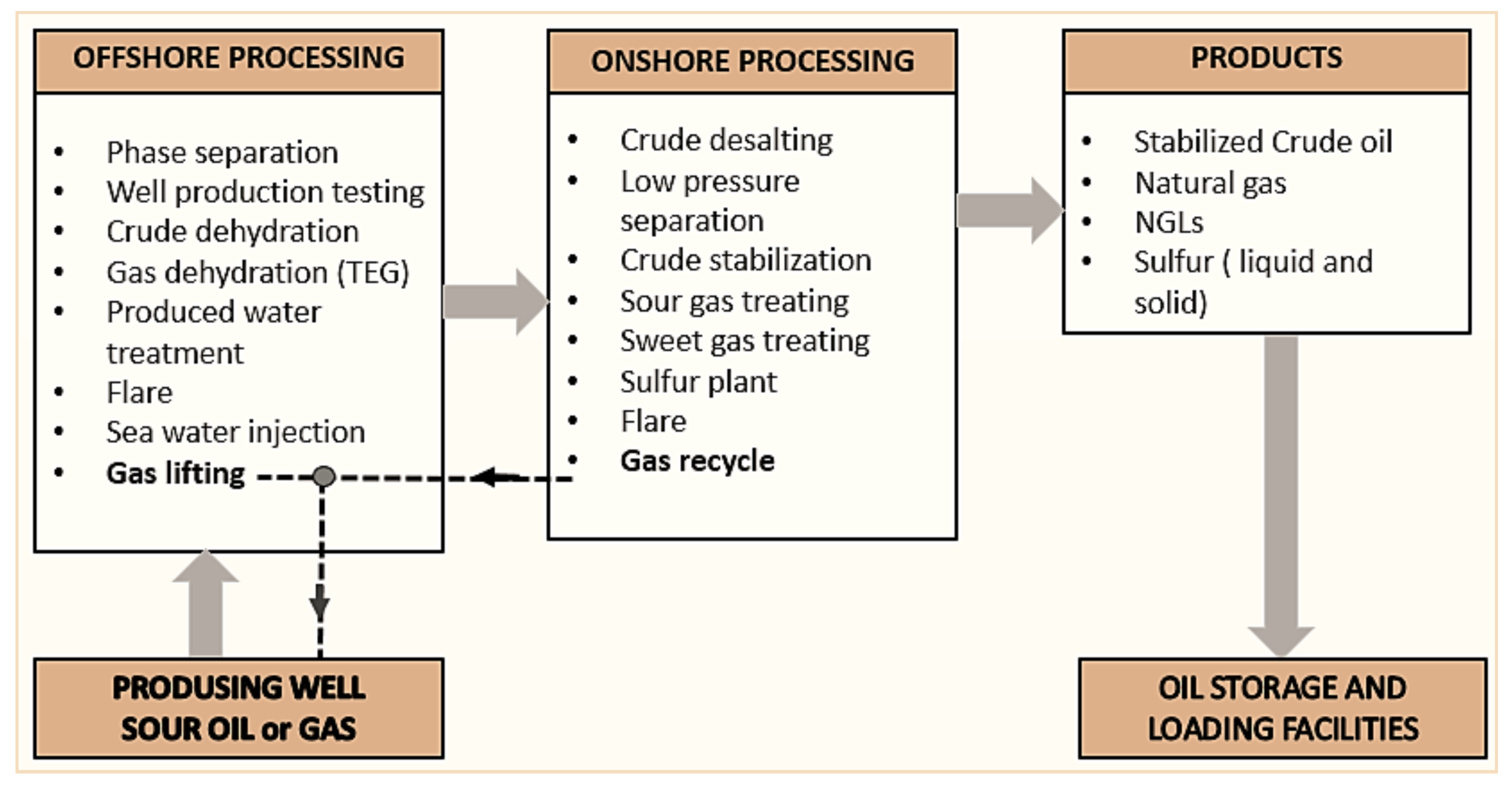
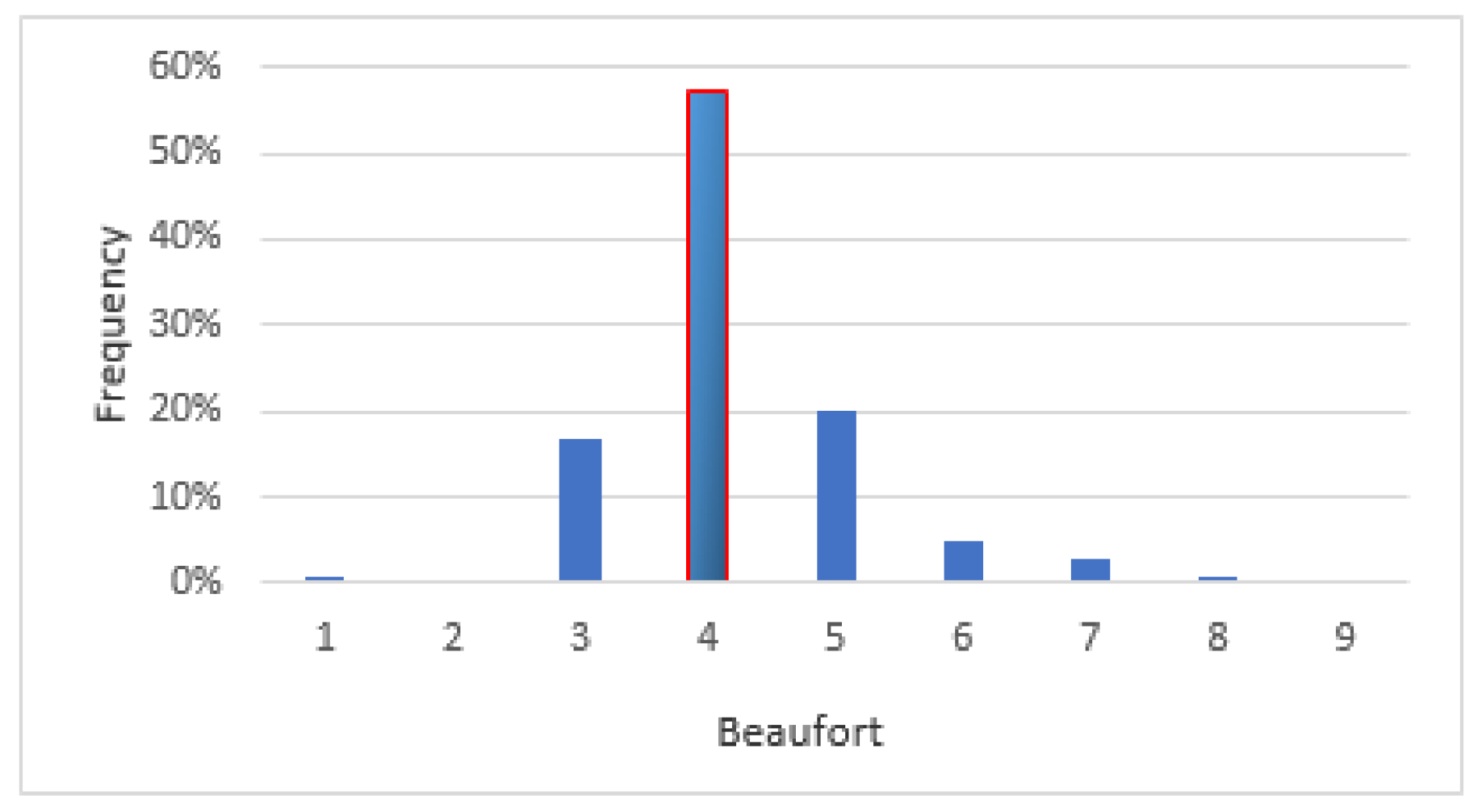
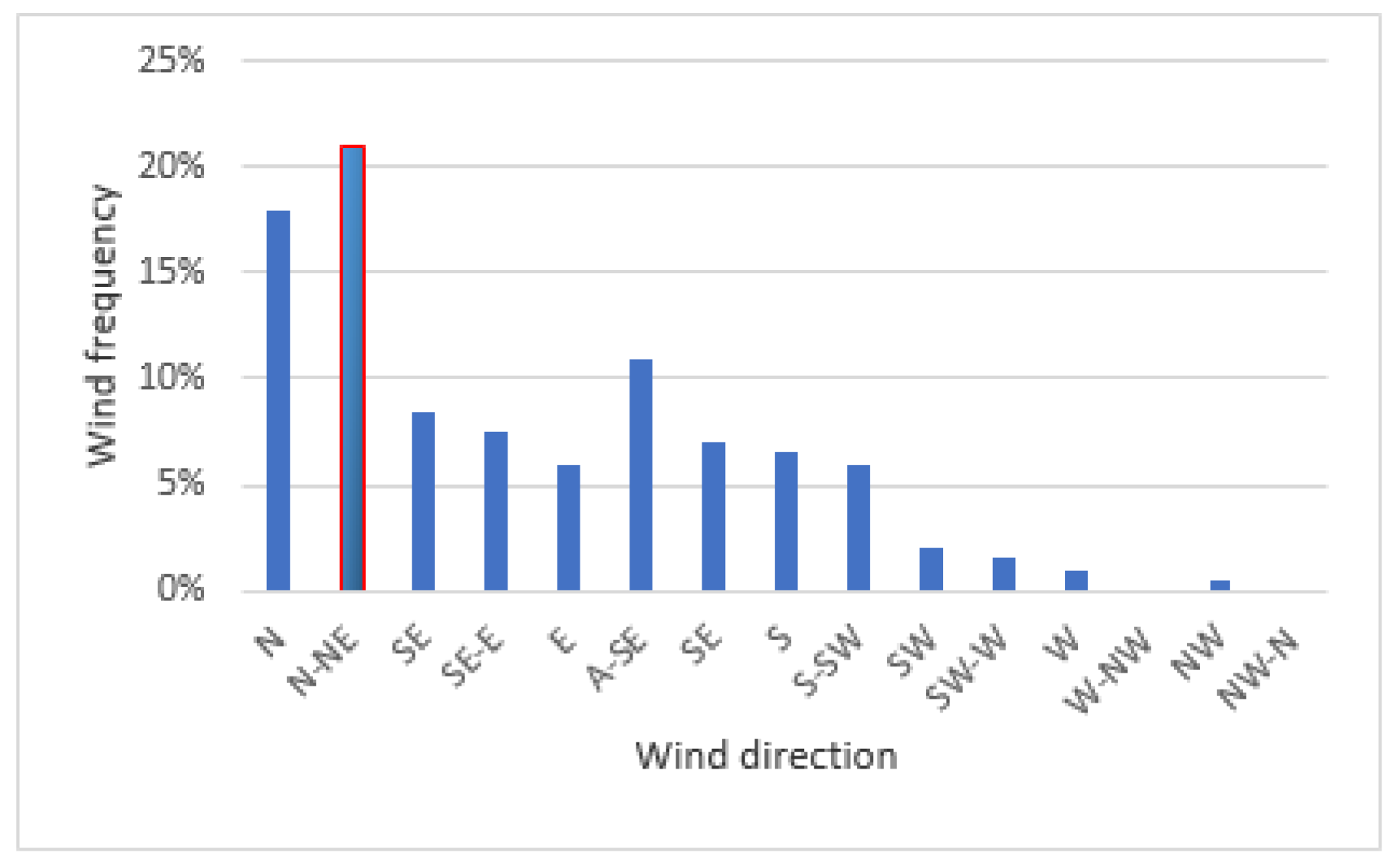
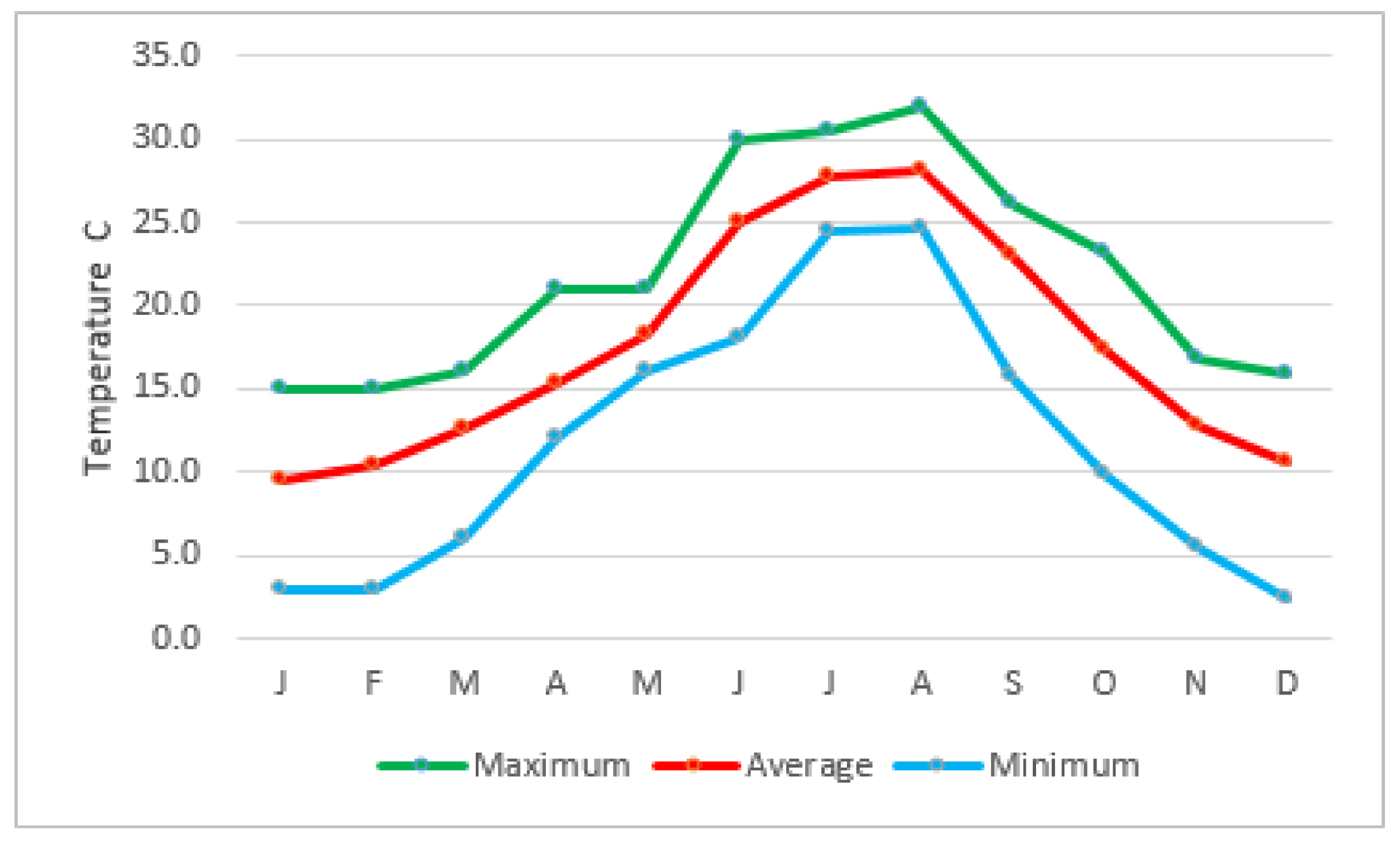
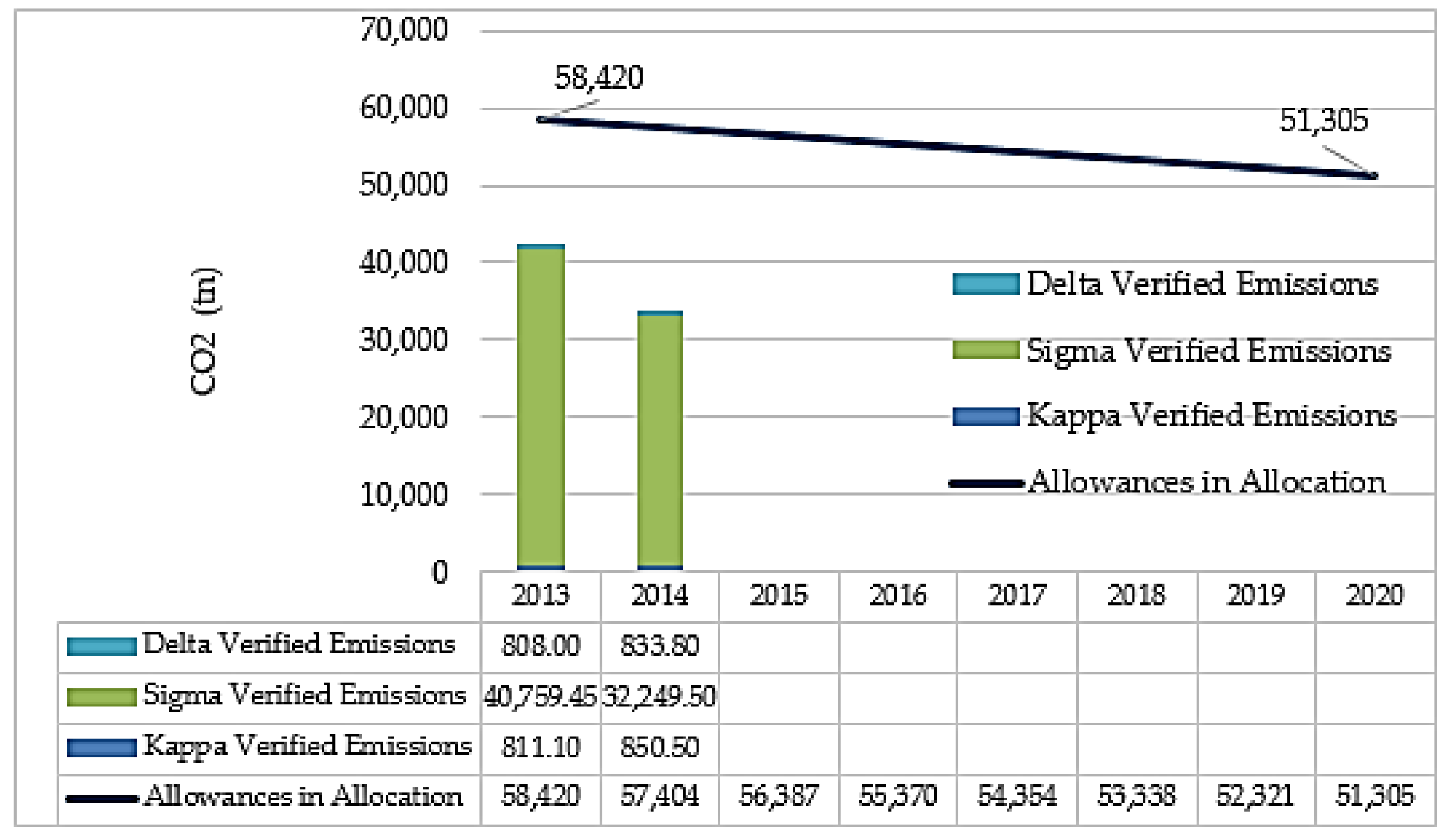
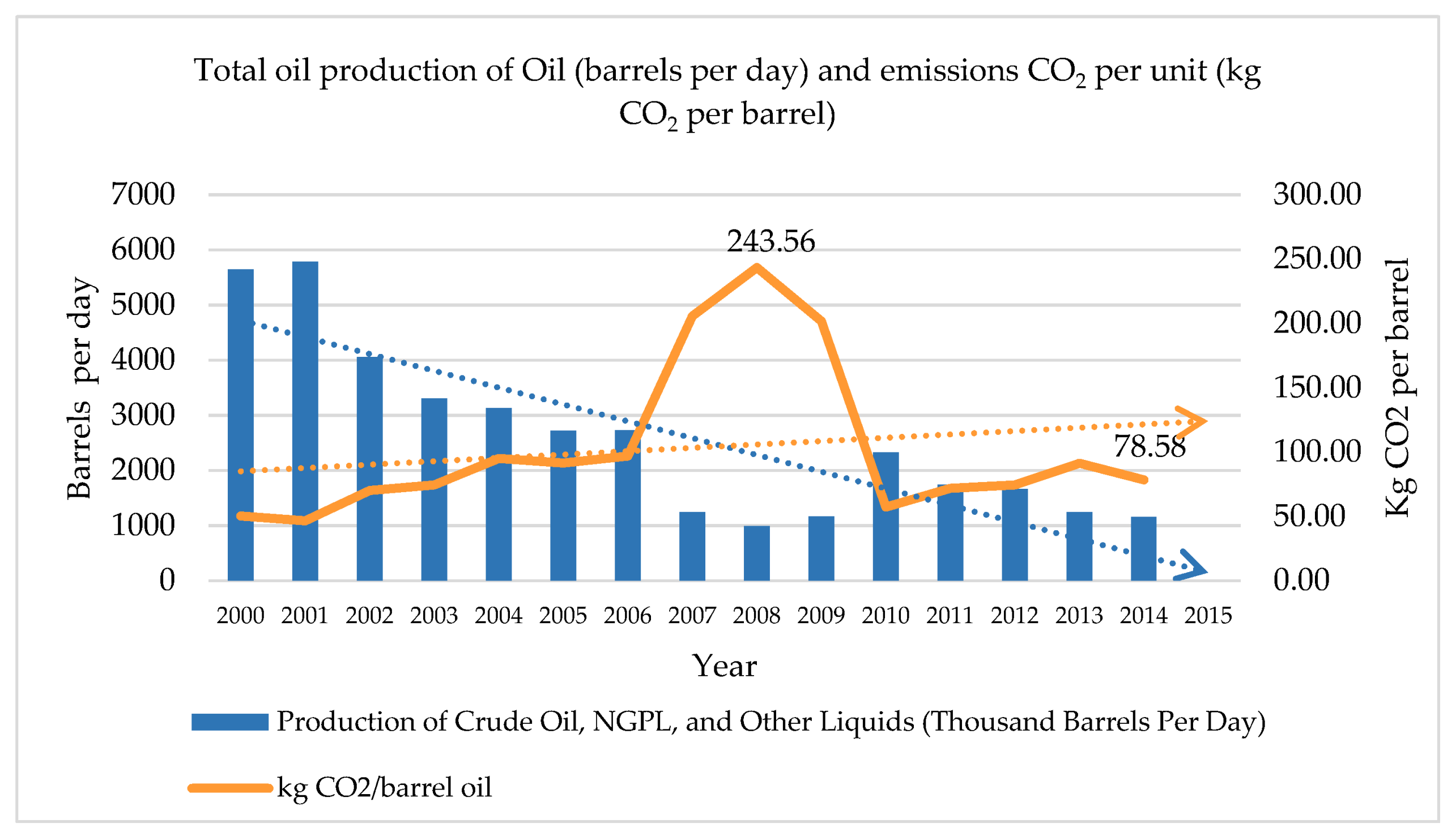

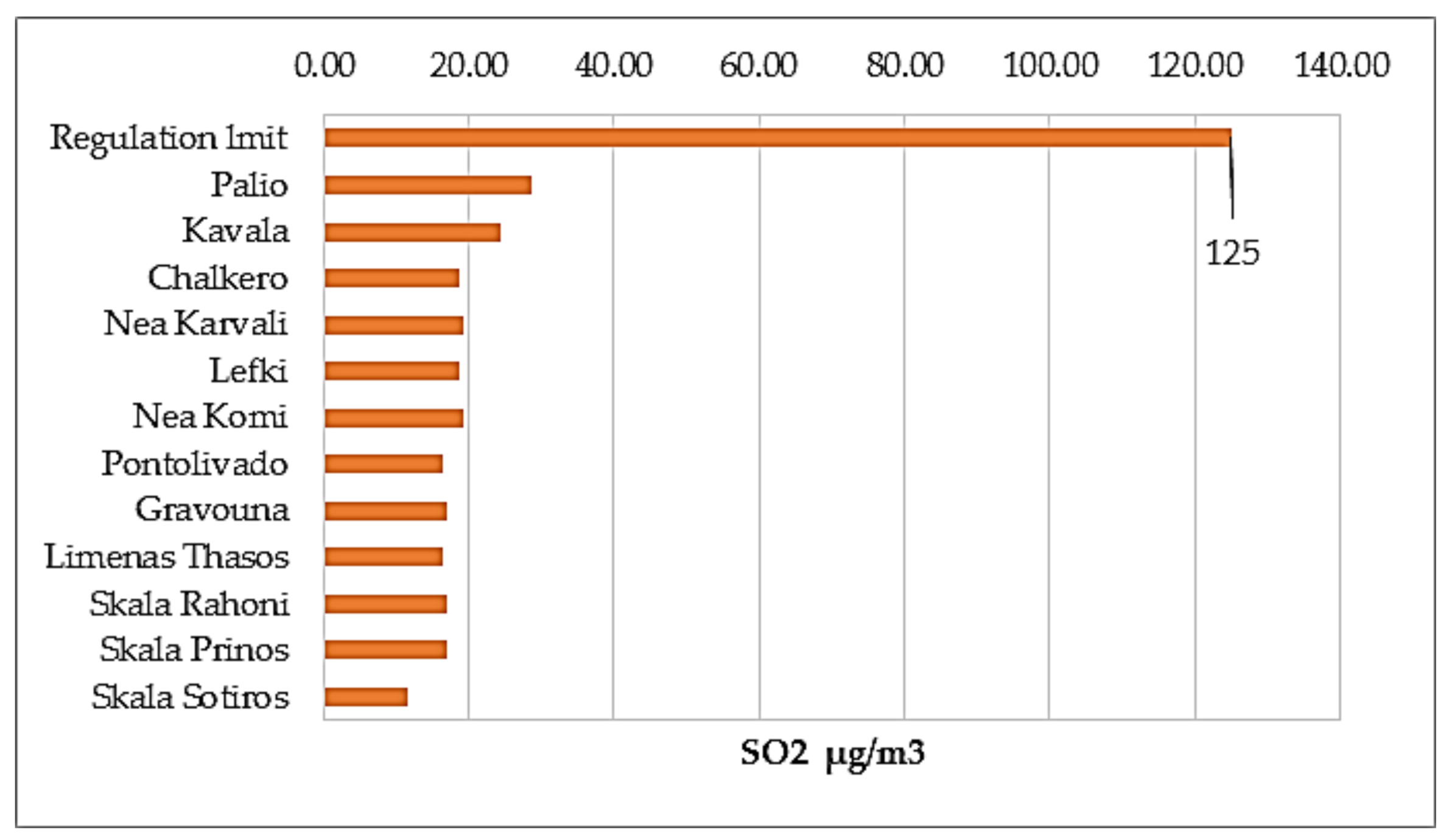
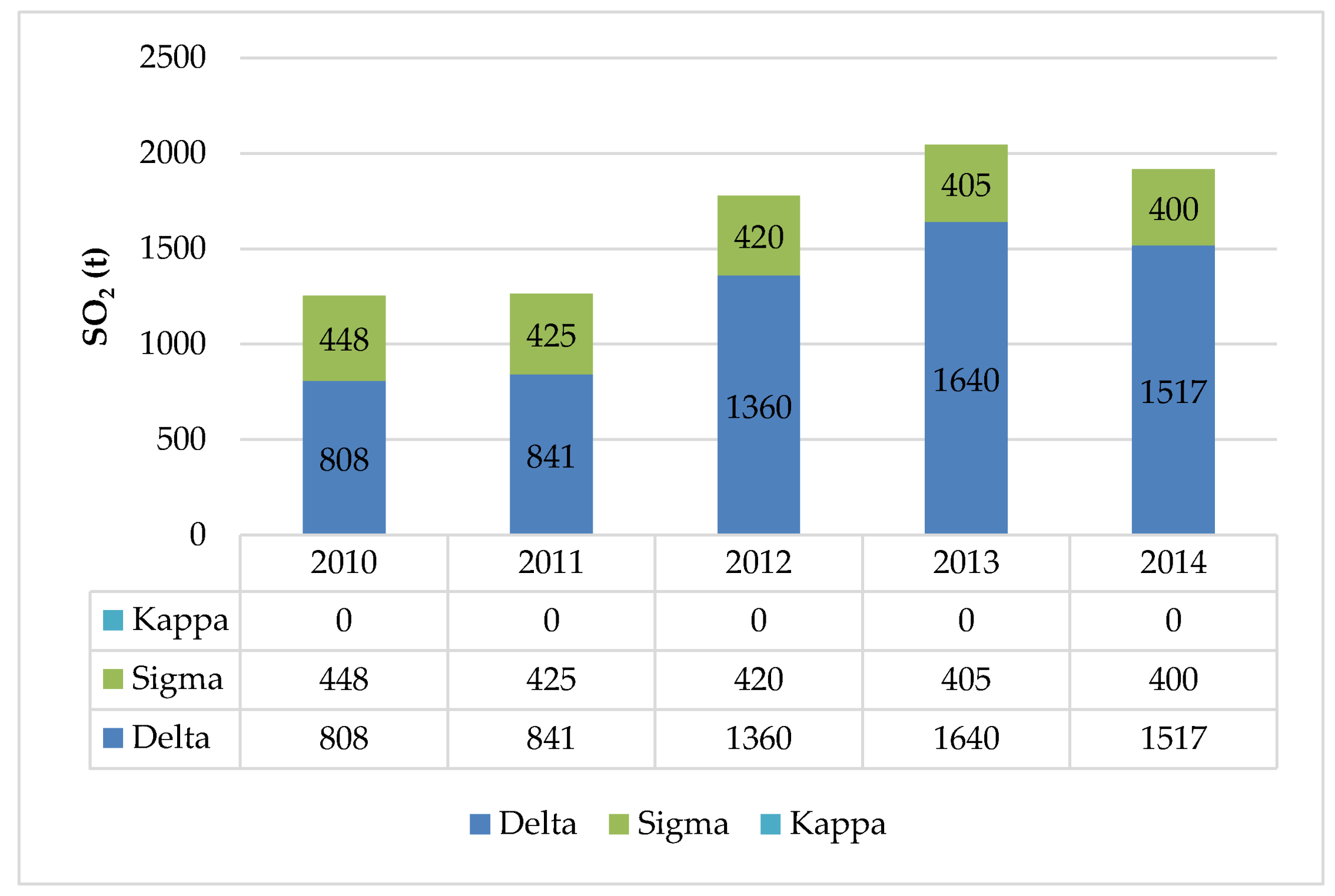
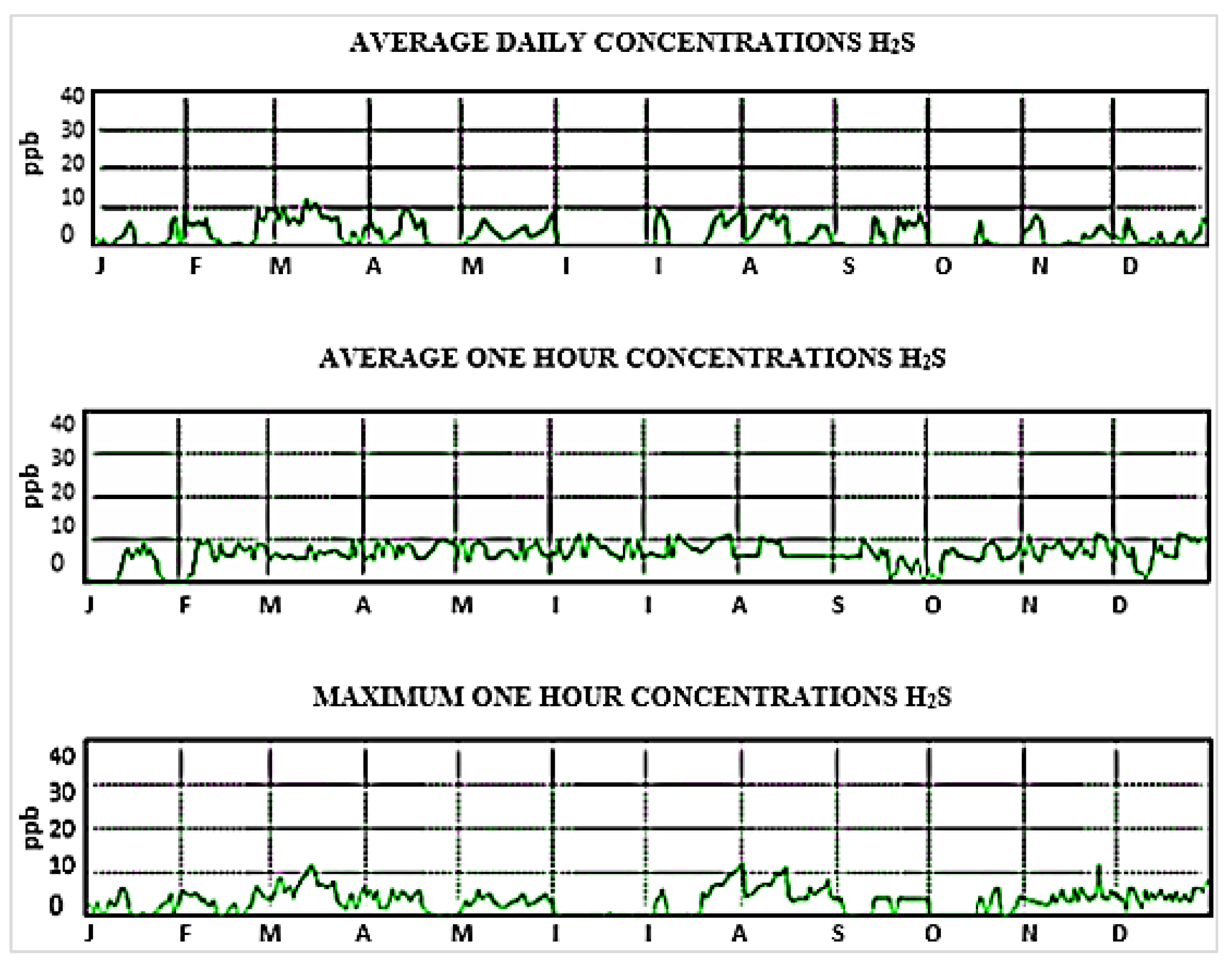
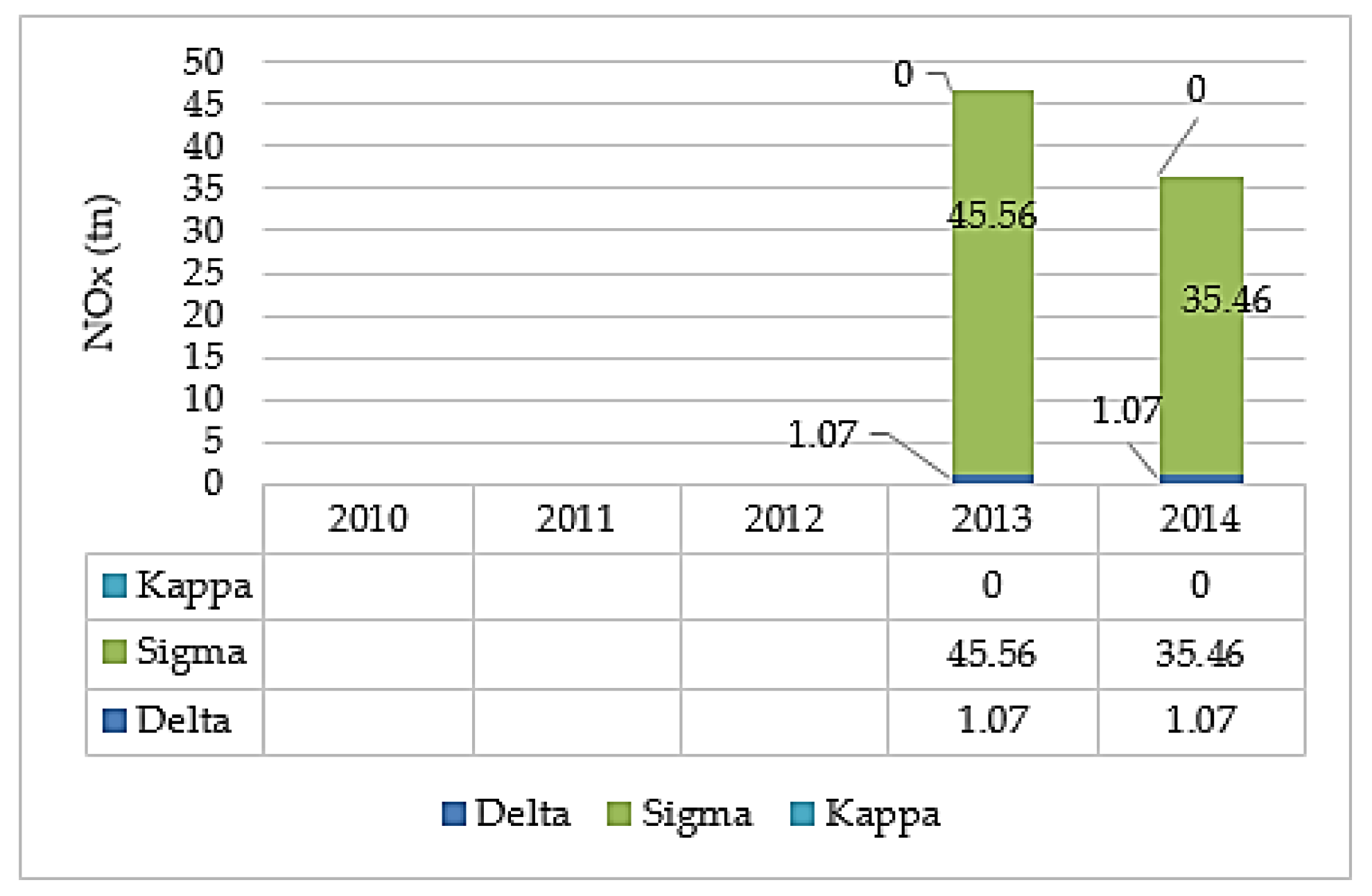
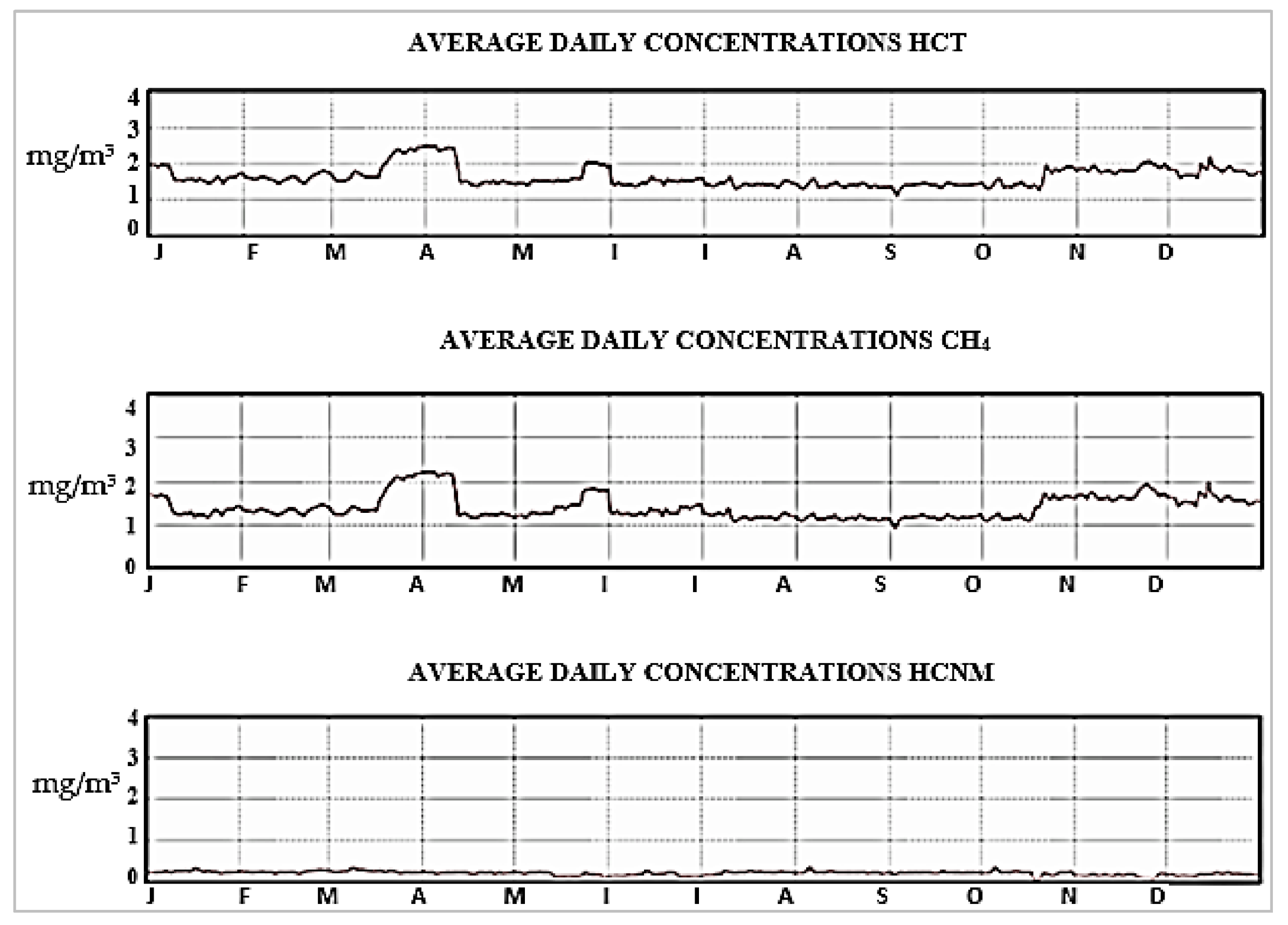
| Pollutant Name | M/C/E | Method Used | Quantity T (Total) (t/year) |
|---|---|---|---|
| Carbon dioxide (CO2) | C | IPCC 2006 | 33,933.80 |
| Volatile organic compounds (VOCs) | C | API 2517 | 11.58 |
| Oxides of nitrogen | M | N/A | 35.46 |
| Oxides of nitrogen | C | Based on the stoichiometric combustion equation | |
| Sulfur dioxide | C | Concawe report for E-PRTR reporting by refineries | 1917 |
| Fuel Type | Net Calorific Value (in TJ/kt) | Carbon Content CC tc/TJ | Oxidation Factor % | Emission Factor (TCO2/TJ) |
|---|---|---|---|---|
| Diesel oil | 42.8 | 20.12 | 100 | 73.78 |
| Heavy fuel oil | 40.14 | 21.38 | 100 | 78.4 |
| Natural gas—Domestic | 15.95–16.22 | 100 | 56.95 | |
| Natural gas—Imports | 15.15–15.18 | 100 | 55.55–55.67 |
| Frequency | Sampling Point | Monitoring Parameter | Limit Values | Average Values |
|---|---|---|---|---|
| Quarterly | B-611 Stack (Boiler) | SO2 (through calculations) | 35/mg/Νm3 | 3.1 mg/Nm3 (year) 6.3 mg/Nm3(day) |
| B-612 Stack (Boiler) | SO2 (through calculations) | 35/mg/Νm3 | 3.1 mg/Nm3 (year) 6.3 mg/Nm3 (day) | |
| Biannual | H-611 Stack (Superheater) | SO2 (through calculations) | 35/mg/Νm3 | 5.4 mg/Nm3 (year) 12.2 mg/Nm3 (day) |
| Continuously | S-501 Incinerator Stack | SO2 | - | 3 mg/Nm3 (year) 5 mg/Nm3 (day) |
| H2S | 10/mg/Νm3 | 00/mg/m3 |
| Frequency | Sampling Point | Monitoring Parameter | Limit Values | Average Values |
|---|---|---|---|---|
| Biannual | B-611 Stack (Boiler) | NOx | 300/mg/Nm3 | 250 mg/Nm3 (year) 290 mg/Nm3 (day) |
| B-612 Stack (Boiler) | NOx | 300/mg/Nm3 | 250 mg/Nm3 (year) 290 mg/Nm3 (day) | |
| H-611 Stack (Superheater) | NOx | 300/mg/Nm3 | 150 mg/Nm3 (year) 200 mg/Nm3 (day) | |
| S-501 Incinerator Stack | NOx | 300/mg/Nm3 | 20 mg/Nm3 (year) 30 mg/Nm3 (day) |
| NOx Emissions Contributions | SO2 Emissions Contributions | CO2 Emissions Contributions |
|---|---|---|
| Boilers (ONP)—83.47% | Flaring (OFP)—79.13% | Boilers (ONP)—74.24% |
| Superheater (ONP)—12.46% | Incinerator (ONP)—20.72% | Incinerator (ONP)—10.16% |
| Flaring and Furnace (OFP)—2.93% | Boilers (ONP)—0.11% | Superheater (ONP)—8.13% |
| Incinerator (ONP)—0.86% | Superheater (ONP)—0.02% | Flaring (ONP)—2.65% |
| Flaring (ONP)—0.27% | Flaring (ONP)—0.02% | Engines (ONP)—2.43% |
| Flaring and Furnace (OFP)—2.39% |
© 2018 by the authors. Licensee MDPI, Basel, Switzerland. This article is an open access article distributed under the terms and conditions of the Creative Commons Attribution (CC BY) license (http://creativecommons.org/licenses/by/4.0/).
Share and Cite
Papailias, G.; Mavroidis, I. Atmospheric Emissions from Oil and Gas Extraction and Production in Greece. Atmosphere 2018, 9, 152. https://doi.org/10.3390/atmos9040152
Papailias G, Mavroidis I. Atmospheric Emissions from Oil and Gas Extraction and Production in Greece. Atmosphere. 2018; 9(4):152. https://doi.org/10.3390/atmos9040152
Chicago/Turabian StylePapailias, Georgios, and Ilias Mavroidis. 2018. "Atmospheric Emissions from Oil and Gas Extraction and Production in Greece" Atmosphere 9, no. 4: 152. https://doi.org/10.3390/atmos9040152
APA StylePapailias, G., & Mavroidis, I. (2018). Atmospheric Emissions from Oil and Gas Extraction and Production in Greece. Atmosphere, 9(4), 152. https://doi.org/10.3390/atmos9040152





